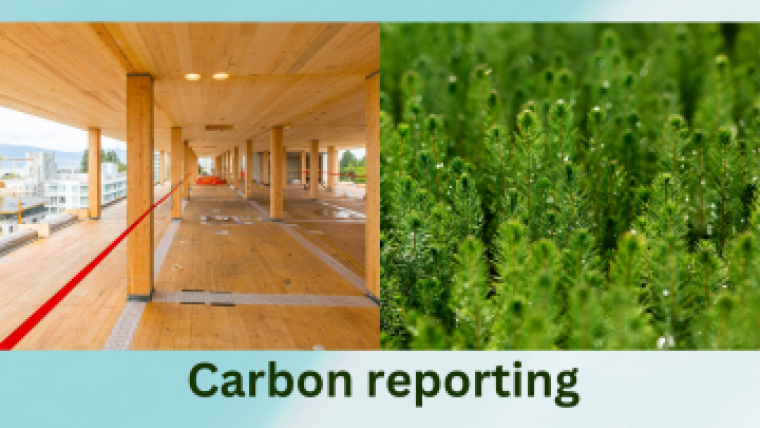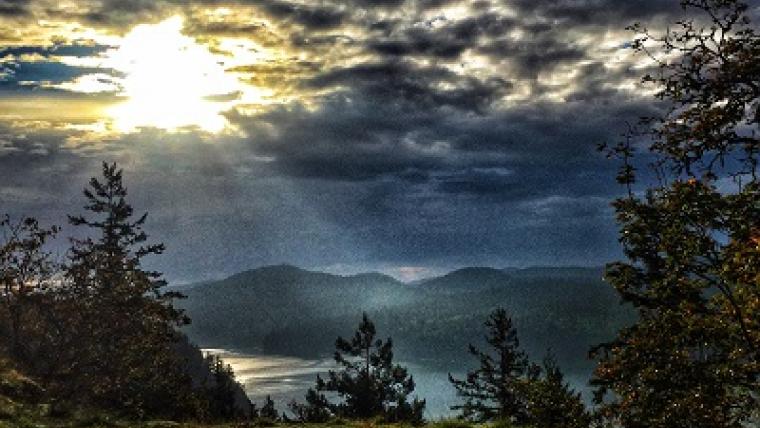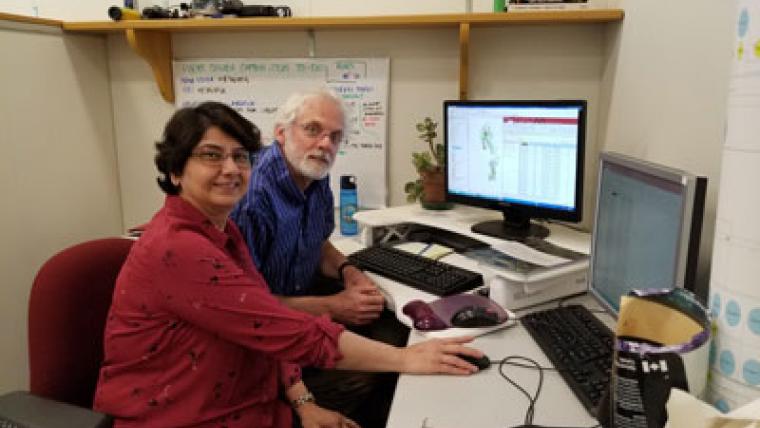Research scientist sets up his lab tools at home to continue research
July 2020
André Arsenault, an Atlantic Forestry Centre ecologist, studies the forests of Newfoundland and Labrador, Quebec and British Columbia from home.
Portions of this article first appeared in Le Gaboteur, Newfoundland and Labrador’s only French-language newspaper.
The COVID-19 pandemic led to the closure of government labs, but it didn’t stop André Arsenault from doing his work. He simply moved his research lab to his house, taking along a microscope and scanner so he could continue analyzing tree and lichen samples.

André coring a tree with his assistant Opax in Corner Brook.
.jpg)
A lungwort lichen in Terra Nova National Park, a lichen bioindicator of healthy forests.
André is a forest ecologist, working for Natural Resources Canada’s (NRCan) Atlantic Forestry Centre (AFC) at his office on the Grenfell Campus of Memorial University in Corner Brook, Newfoundland and Labrador. He analyzes patterns of forest fires, insect outbreaks and other historical disturbances to better understand how forests were developed in the past and how they might change in the future under different forest management approaches and climate change scenarios.
André also studies the effects of natural disturbances and logging on forest biodiversity with a focus on lichens — the moss-like organisms that grow on plants and rocks — as key indicators. The main aim of this research is to guide sustainable forest management through conservation and different methods.
New ways to work
From home, it’s relatively easy for André to continue his research in dendrochronology — the dating and measuring of the annual growth rings of tree cross-sections and cores — with the microscope, scanner and specialized software that he uses in his office lab. He can also continue his other research on biodiversity by identifying and analyzing lichen samples.
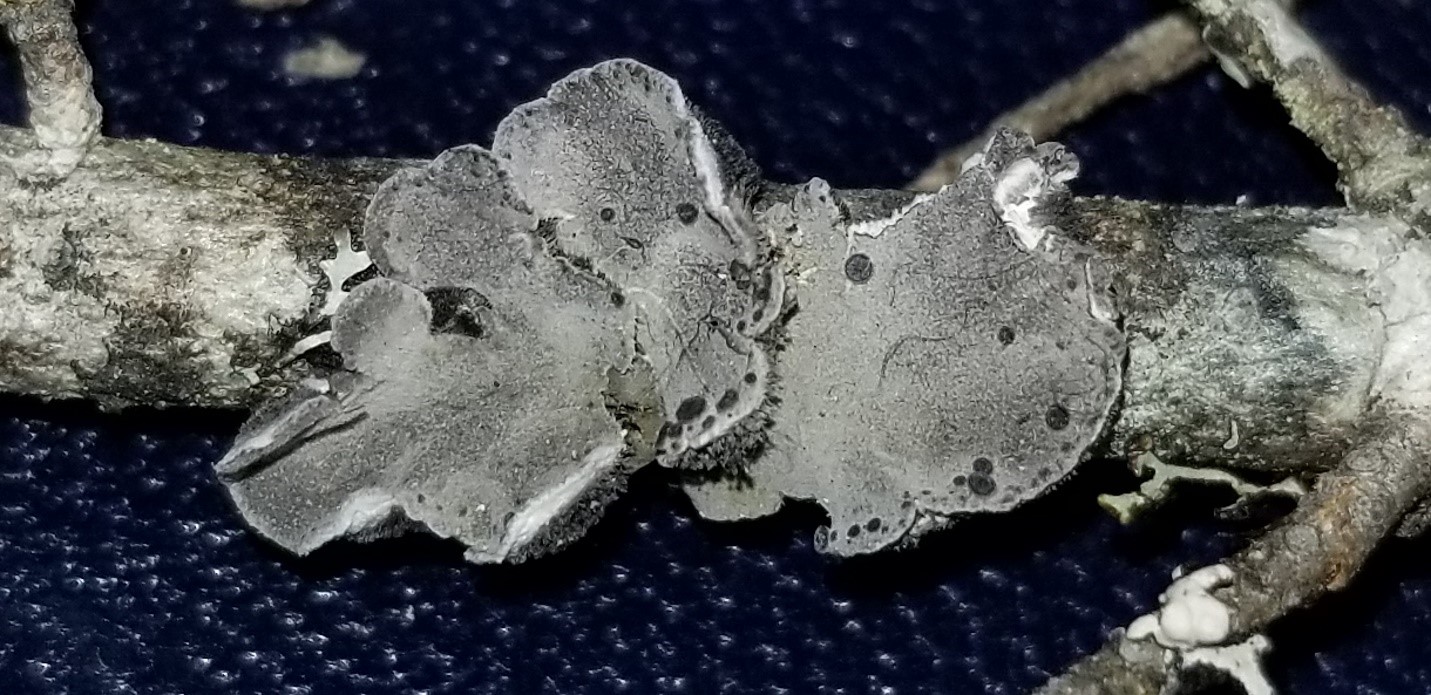
A specimen of the boreal felt lichen, which attaches itself to tree trunks and branches
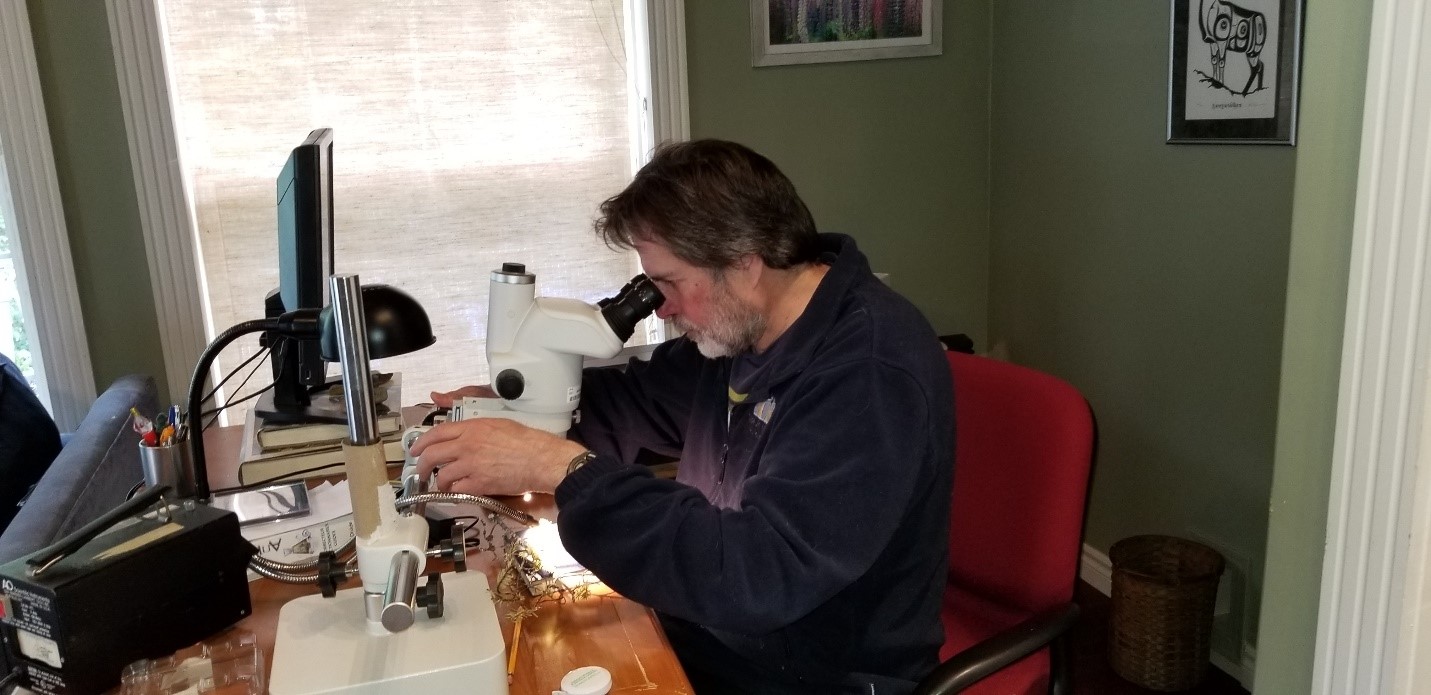
André examines a branch with a boreal felt lichen, which is an indicator of healthy forests.
But André had a special concern about the fate of someone else’s research. One of his graduate students had sent lake sediment samples from Terra Nova National Park, on the east coast of Newfoundland, to a specialized lab at Université Laval for radio-carbon dating just before the pandemic — and then the lab closed, sealing off this material that was essential for reconstructing the history of wildfires and vegetation in central Newfoundland. However, the disruption was short-lived: the lab eventually re-opened, and André and his student obtained excellent results.
Such are the difficulties, both foreseeable and unknowable, in a time of crisis. “The biggest challenge for everyone during COVID-19 — not just researchers — is uncertainty,” André says. “We adapt our work to what we think is going to happen in the field this summer, stay flexible and wait to see how the restrictions evolve.”
This uncertainty brings many difficulties. Because of COVID-19, André’s research for the summer — a study of caribou and their connection with lichens in Quebec and a study of wildfire history in British Columbia — could be delayed by a year if he can’t travel. If that’s the case, he may continue his field research in the forests of western Newfoundland and Labrador, where it would be easy for him and his team to maintain physical distancing and work in a very low-risk environment.
Focusing on the possible
During the pandemic, André has been able to maintain a positive outlook: when some types of research were impossible, he instead focused on what could be done. He’s also helping the students he co-supervises deal with the challenging new conditions by steering them in other directions — such as reviewing the scientific literature on their topics of interest and drafting their own results to date — while they were waiting to be able to go into the field or to conduct other types of analysis.
As for André himself, he became a virtual participant at the conferences and seminars that he normally would have attended in person. He finds virtual platforms to be an excellent way to maintain connections with the researchers in other organizations he usually collaborates with.
“The new environment created by the pandemic has really disrupted work, but I was really lucky to be able to adapt quickly,” he says. “In a strange way, this disruption forces us to push the re-set button and look at things with a different perspective. I wasn’t very warm to the idea of social media platforms, but now I am getting used to them, and it’s nice to see that they can bring people together in a very uncertain time.”
Page details
- Date modified:
